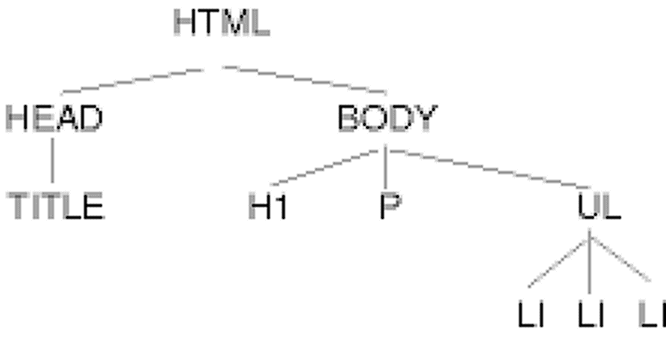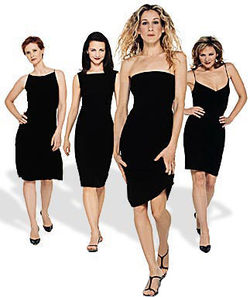Cascading Style Sheets (CSS)
CSE 190 M (Web Programming), Spring 2007
University of Washington
Reading: Sebesta Ch. 3 sections 3.1 - 3.6.6, 3.8 - 3.9, 3.12
Except where otherwise noted, the contents of this presentation are © Copyright 2007 Marty Stepp and are licensed under the Creative Commons Attribution 2.5 License.
The bad way to produce styles
<p><font face="Arial">Welcome to Greasy Joe's. You will <b>never, <i>ever, <u>EVER</u></i></b> beat <font size="+1" color="red">OUR</font> prices!</font></p>
Welcome to Greasy Joe's. You will never, ever, EVER beat OUR prices!
- the above tags such as
b,i,u, andfontare legal in older HTML but are deprecated in strict XHTML- you should not use the above tags on your homework assignments!
- why are we discouraged from expressing stylistic information this way?
Cascading Style Sheets (CSS)
- describe the appearance, layout, and presentation of information on a web page (as opposed to HTML, which describes the content of the page)
- describe how information is to be displayed, not what is being displayed
- can be embedded in HTML document or placed into separate
.cssfile- advantage of
.cssfile: one style sheet can be shared across many HTML documents
- advantage of
Basic CSS rule syntax
selector { property: value; property: value; ... property: value; }
p {
font-family: sans-serif;
color: red;
}
- a CSS file consists of one or more rules
- each rule starts with a selector that specifies an HTML element and then applies style properties to it
Attaching a CSS file: <link>
<link rel="stylesheet" type="text/css" href="filename" />
<link rel="stylesheet" type="text/css" href="style.css" /> <link rel="stylesheet" type="text/css" href="http://www.google.com/uds/css/gsearch.css" />
- the
linktag appears in theheadof an HTML page - can link to multiple style sheet files
- in case of a conflict (two sheets define a style for the same HTML element), the latter sheet's properties will be used
CSS properties for colors
p {
color: red;
background-color: yellow;
}
This paragraph uses the style above.
color: color of the element's textbackground-color: color that will appear behind the element
Specifying colors
p { color: red; }
h2 { color: rgb(128, 0, 196); }
h4 { color: #FF8800; }
This paragraph uses the first style above.
This heading uses the second style above.
This heading uses the third style above.
- color names:
aqua,black,blue,fuchsia,gray,green,lime,maroon,navy,olive,purple,red,silver,teal,white(white),yellow - RGB codes: red, green, and blue values from 0 (none) to 255 (full)
- hex codes: RGB values in base-16 from 00 (0, none) to FF (255, full)
CSS properties for fonts
font-family: which font will be usedfont-size: how large the letters will be drawnfont-style: used to enable/disable italic stylefont-weight: used to enable/disable bold style- Complete list of font properties
font-family
p { font-family: "Georgia"; }
h2 { font-family: "Arial Narrow"; }
This paragraph uses the first style above.
This heading uses the second style above.
- enclose multi-word font names in quotes
More about font-family
p { font-family: "Garamond", "Times New Roman", serif; }
This paragraph uses the above style.
- can specify multiple fonts from highest to lowest priority
- generic font names:
serif, sans-serif, cursive, fantasy, monospace
- if the first font is not found on the user's computer, the next is tried
- generally should specify similar fonts
- placing a generic font name at the end of your
font-familyvalue ensures that every computer will use a valid font
More about font-size
p { font-size: x-large; }
This paragraph uses the above style.
- vague font sizes:
xx-small,x-small,small,medium,large,x-large,xx-large - relative font sizes:
smaller,larger - percentage font sizes, e.g.:
90%,120% - units: pixels (
px) vs. point (pt) vs. m-size (em)
16px,16pt,1.16em
pxspecifies a number of pixels on the screen (absolute)ptspecifies number of point, where a point is 1/72 of an inch onscreenemspecifies number of m-widths, where 1 em is equal to the font's current size
font-weight, font-style
p {
font-weight: bold;
font-style: italic;
}
This paragraph uses the style above.
- either of the above can be set to
normalto turn them off (e.g. headings)
Body styles
body { font-size: 16px; }
- to apply a style to the entire body of your page, write a selector for the
bodyelement - saves you from manually applying a style to each element
Practice problem: Kittens
|
Edit this HTML and add the following styles to it:
|
Why <strong>, <em> and not <b>, <i>?
strong { font-weight: normal; color: red; }
em { font-style: normal; background-color: #DDDDDD; }
Now if I want to strongly emphasize something or just emphasize it, it doesn't necessarily have to be bold or italic.
strongandemdescribe attributes of the content (it is something important in the document that you want to emphasize)bandidescribe formatting and presentation ("I want this to be bold.")
CSS properties for text
text-align: alignment of text within its elementtext-decoration: decorations such as underliningline-height,word-spacing,letter-spacing: gaps between the various portions of the texttext-indent: indents the first letter of each paragraph- Complete list of text properties
text-align
blockquote { text-align: justify; }
h2 { text-align: center; }
The Emperor's Quote
[TO LUKE SKYWALKER] The alliance... will die. As will your friends. Good, I can feel your anger. I am unarmed. Take your weapon. Strike me down with all of your hatred and your journey towards the dark side will be complete.
text-aligncan beleft,right,center, orjustify(which widens all full lines of the element so that they occupy its entire width)
text-decoration
p { text-decoration: underline; }
This paragraph uses the style above.
- can also be
overline,line-through,blink - effects can be combined:
text-decoration: overline underline;
CSS properties for dimensions
p { width: 400px; background-color: yellow; }
h2 { width: 50%; background-color: aqua; }
This paragraph uses the first style above.
This heading uses the second style above.
width,height: how wide or tall to make this elementmax-width,max-height,min-width,min-height: the maximum or minimum size of this element in the given dimension- all of these apply only to block elements; ignored for inline elements
CSS comments: /* ... */
/* This is a comment.
It can span many lines in the CSS file. */
p { color: red; background-color: aqua; }
- CSS (like HTML) is usually not commented as rigorously as programming languages such as Java
- the
//single-line comment style is NOT supported in CSS
Grouping styles
p,h1,h2 { color: blue; }
h2 { background-color: yellow; }
This paragraph uses the above style.
This heading uses the above style.
- a style can select multiple elements separated by commas
- the given properties will be applied to all of the elements
- the individual elements can also have their own styles (like
h2above)
Document tree
<html><head><title>My home page</title></head> <body><h1>My home page</h1> <p>Let me tell you about my favorite composers:</p> <ul><li>Elvis Costello</li> <li>Johannes Brahms</li> <li>Georges Brassens</li> </ul></body></html>

Inheriting styles (explanation)
body { font-family: sans-serif; background-color: yellow; }
p { color: red; background-color: aqua; }
a { text-decoration: overline underline; }
h2 { font-weight: bold; text-align: center; }
- when multiple styles apply to an element, they are inherited
- a more tightly matching rule can override a more general inherited rule
- not all properties are inherited (notice link's color above)
Styles that conflict
p,h1,h2 { color: blue; font-style: italic; }
h2 { color: red; background-color: yellow; }
This paragraph uses the first style above.
This heading uses both styles above.
- when two styles set conflicting values for the same property, the latter style takes precedence
W3C CSS Validator
<p><a href="http://jigsaw.w3.org/css-validator/check/referer"> <img src="http://jigsaw.w3.org/css-validator/images/vcss" alt="Valid CSS!" /></a></p>
- jigsaw.w3.org/css-validator/
- checks your CSS to make sure it meets the official CSS specifications
- more picky than the web browser, which may render malformed CSS correctly
Practice problem: More kittens
|
Edit the previously-styled Kitten HTML and add the following styles:
|
----- CSS Classes -----
CSS Classes
Reading: Sebesta Ch. 3 sections 3.2 - 3.3, 3.4.2 - 3.4.4, 3.12
CSS class selectors
p.special {
background-color: yellow;
font-weight: bold;
}
- selectively applies a CSS rule to only the paragraphs that are part of the class named
special(next slide) - gives a style to some occurrences of an element but not others
(I don't want ALL paragraphs to be yellow, just these three...
)
The HTML class attribute
<p>Spatula City! Spatula City!</p> <p class="special">See our spectacular spatula specials!</p> <p class="special">Today only: satisfaction guaranteed.</p> <p>We'll beat any advertised price!</p>
Spatula City! Spatula City!
See our spectacular spatula specials!
Today only: satisfaction guaranteed.
We'll beat any advertised price!
Class selectors without element
.standout {
color: red;
font-family: cursive;
}
- selectively applies a CSS rule to any element that is part of the class named
standout
HTML class attribute revisited
<h2 class="standout">Spatula City! Spatula City!</h2> <p class="special">See our spectacular spatula specials!</p> <p class="special standout">Satisfaction guaranteed.</p> <p class="standout">We'll beat any advertised price!</p>
Spatula City! Spatula City!
See our spectacular spatula specials!
Satisfaction guaranteed.
We'll beat any advertised price!
- an element can be a member of multiple classes (separated by spaces)
CSS ID selectors
p#missionstatement {
font-style: italic;
font-family: "Garamond", "Century Gothic", serif;
}
- selectively applies a CSS rule to only the paragraphs that has the particular ID named
missionstatement(next slide) - differs from class selector in that an ID can only be used once in the HTML document (won't validate otherwise)
- element (
pabove) can be omitted if desired; rule will apply to any element with IDmissionstatement
The HTML id attribute
<p>Spatula City! Spatula City!</p>
<p id="missionstatement">Our mission is to provide the most
spectacular spatulas and splurge on our specials until our
customers <q>esplode</q> with splendor!</p>
Spatula City! Spatula City!
Our mission is to provide the most spectacular spatulas
and splurge on our specials until our customers esplode
with splendor!
Linking to sections of a web page
<p>Visit <a href= "http://www.textpad.com/download/index.html#downloads"> textpad.com</a> to get the TextPad editor.</p> <p><a href="#mac">Directions for Mac OS X</a></p>
Visit textpad.com to get the TextPad editor.
- a link target can include an ID at the end, preceded by a
# - browser will load that page and scroll to element with given ID
- can link to an ID within the current page
Logical divisions in HTML: <div>
a section or division of your HTML page (block-level)
<div class="standout"> <h2>Spatula City! Spatula City!</h2> <p class="special">See our spectacular spatula specials!</p> <p>We'll beat any advertised price!</p> </div>
Spatula City! Spatula City!
See our spectacular spatula specials!
We'll beat any advertised price!
- has no onscreen appearance, but you can apply a style or ID to it, which will be inherited by all elements inside the
div
Inline styling sections: <span>
an inline element used purely as a range for applying styles
<h2>Spatula City! Spatula City!</h2> <p>See our <span class="special">spectacular</span> spatula specials!</p> <p>We'll beat <span class="standout">any advertised price</span>!</p>
Spatula City! Spatula City!
See our spectacular spatula specials!
We'll beat any advertised price!
- has no onscreen appearance, but you can apply a style or ID to it, which will be applied to the text inside the
span
Embedding style sheets: <style>
<head>
<style type="text/css">
p { font-family: sans-serif; color: red; }
h2 { background-color: yellow; }
</style>
</head>
- should be placed within the
headof the HTML page - linking to an external style sheet file is preferred, especially when you have many styles
Inline styles: the style attribute
<p style="font-family: sans-serif; color: red;">
This is a paragraph</p>
This is a paragraph
- higher precedence than embedded or linked styles
- useful for one-time overrides
Cascading style sheets
- it's called Cascading Style Sheets because the attributes of an element cascade together in this order:
- browser's default styles
- external style sheet files (in a
<link>tag) - internal style sheets (inside a
<style>tag in the page's header) - inline style (the
styleattribute of the HTML element)
Practice problem: Digg
Add styling to the web page stored as digg.html to make it look like this:
|
|
|
----- Background properties -----
CSS properties for backgrounds
CSS properties for backgrounds
background-color: color to fill backgroundbackground-image: image to place in backgroundbackground-position: placement of bg image within elementbackground-repeat: whether/how bg image should be repeatedbackground-attachment: whether bg image scrolls with pagebackground: shorthand to set all background properties
background-image
body {
background-image: url("draft.jpg");
}
This is the first paragraph
This is the second paragraph...
It occupies 2 lines
- background image/color fills the content area and the padding
background-repeat
body {
background-image: url("draft.jpg");
background-repeat: repeat-x;
}
This is the first paragraph
This is the second paragraph...
It occupies 2 lines
- can be
repeat(default),repeat-x,repeat-y, orno-repeat
background-position
body {
background-image: url("draft.jpg");
background-repeat: no-repeat;
background-position: 370px 20px;
}
This is the first paragraph
This is the second paragraph...
It occupies 2 lines
- value consists of two tokens, each of which can be
top,left,right,bottom,center, a percentage, or a length value inpx,pt, etc. - value can be negative to shift left/up by a given amount
Showing a partial image
.partialimage1, .partialimage2 {
background-image: url("sex_and_the_city.jpg");
background-repeat: no-repeat;
width: 70px; height: 200px;
}
.partialimage1 { background-position: 0px 0px; }
.partialimage2 { background-position: -115px 0px; }

----- Advanced CSS -----
Advanced CSS
Context selectors
selector1 selector2 { properties }
- applies the given properties to selector2 only if it is inside a selector1 on the page
selector1 > selector2 { properties }
- applies the given properties to selector2 only if it is directly inside a selector1 on the page (selector1 tag is immediately inside selector2 with no tags in between)
Context selector example
li strong { text-decoration: underline; }
<p>Shop at <strong>Hardwick's Hardware</strong>...</p> <ul> <li>The <strong>best</strong> prices in town!</li> <li>Act while supplies last!</li> </ul>
Shop at Hardwick's Hardware...
- The best prices in town!
- Act while supplies last!
More complex example
div#ad li.important strong { text-decoration: underline; }
<div id="ad"> <p>Shop at <strong>Hardwick's Hardware</strong>...</p> <ul> <li class="important">The <strong>best</strong> prices in town!</li> <li>Act <strong>while supplies last!</strong></li> </ul> </div>
Shop at Hardwick's Hardware...
- The best prices in town!
- Act while supplies last!
Pseudo-classes
a:link {color: #FF0000} /* unvisited link */
a:visited {color: #00FF00} /* visited link */
a:hover {color: #FF00FF} /* mouse over link */
a:active {color: #0000FF} /* selected link */
:active: an activated or selected element:focus: an element that has the keyboard focus:hover: an element that has the mouse over it:link: a link that has not been visited:visited: a link that has already been visited:first-child: an element that is the first child of another
Pseudo-class example
a:link {color: red}
a:visited {color: green}
a:hover {color: purple; background-color: yellow;}
a:active {color: blue}
<a href="http://www.google.com">Goooooogle</a>Goooooogle
- How would we make unvisited links blue, only they are in a paragraph inside of the
divwith idheaderor idfooter?
- answer:
div#header p a:link, div#footer p a:link { color: blue; }
The list-style-type property
ol { list-style-type: lower-roman; }
- Possible values:
none: No markerdisc(default),circle,squaredecimal: 1, 2, 3, etc.decimal-leading-zero: 01, 02, 03, etc.lower-roman: i, ii, iii, iv, v, etc.upper-roman: I, II, III, IV, V, etc.lower-alpha: a, b, c, d, e, etc.upper-alpha: A, B, C, D, E, etc.lower-greek: alpha, beta, gamma, etc.- others:
hebrew,armenian,georgian,cjk-ideographic,hiragana,katakana,hiragana-iroha,katakana-iroha
The display property
h2 { display: inline; background-color: yellow; }
This is a heading
This is another heading
- sets the type of CSS box model an element is displayed with
- can be
none,inline,block,run-in,compact, ... - use sparingly, because it can radically alter the page layout
The visibility property
p.secret {
visibility: hidden;
}
- sets whether an element should be shown onscreen
- the element will still take up space onscreen, but will not be shown
- to make it not take up any space, set
displaytononeinstead
- can be
visible(default) orhidden - can be used to show/hide dynamic HTML content on the page in response to events
Practice problem: ESPN.com
 Modify the provided ESPN sports page (HTML, CSS, JS) to include a drop-down menu of links that appears when clicked.
Modify the provided ESPN sports page (HTML, CSS, JS) to include a drop-down menu of links that appears when clicked.
- links: black text (red on mouse over)
- text under NBA image: bold, color
666666 - all elements inside header have middle vertical alignment
- 10px L/R padding on main list items, with
relativepositions, 11pt bold font - menu is positioned 1.5em from top/left of the list item clicked
- links inside menu don't underline and have bg color of
E4E2B4on mouse over


 KITTENS!
KITTENS!

